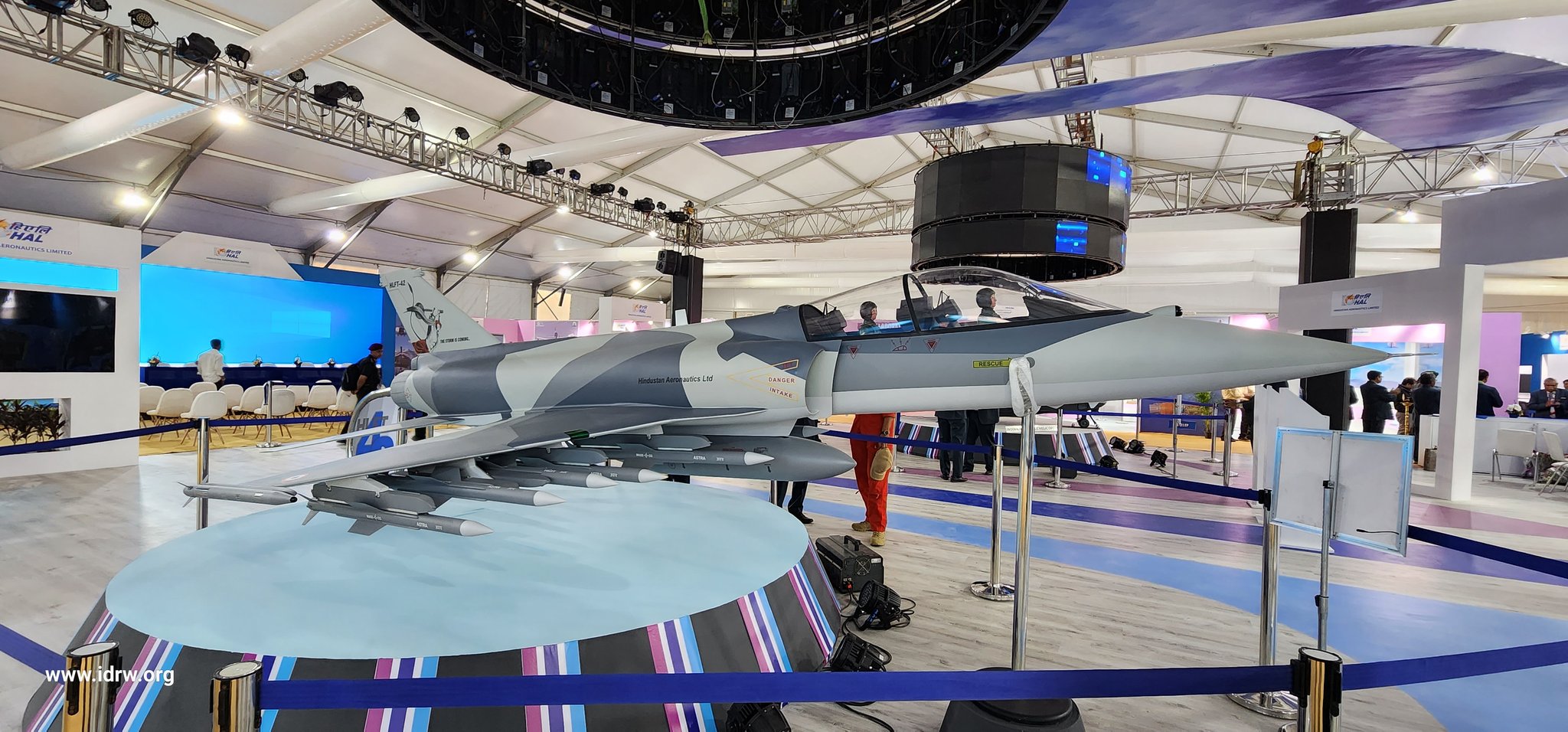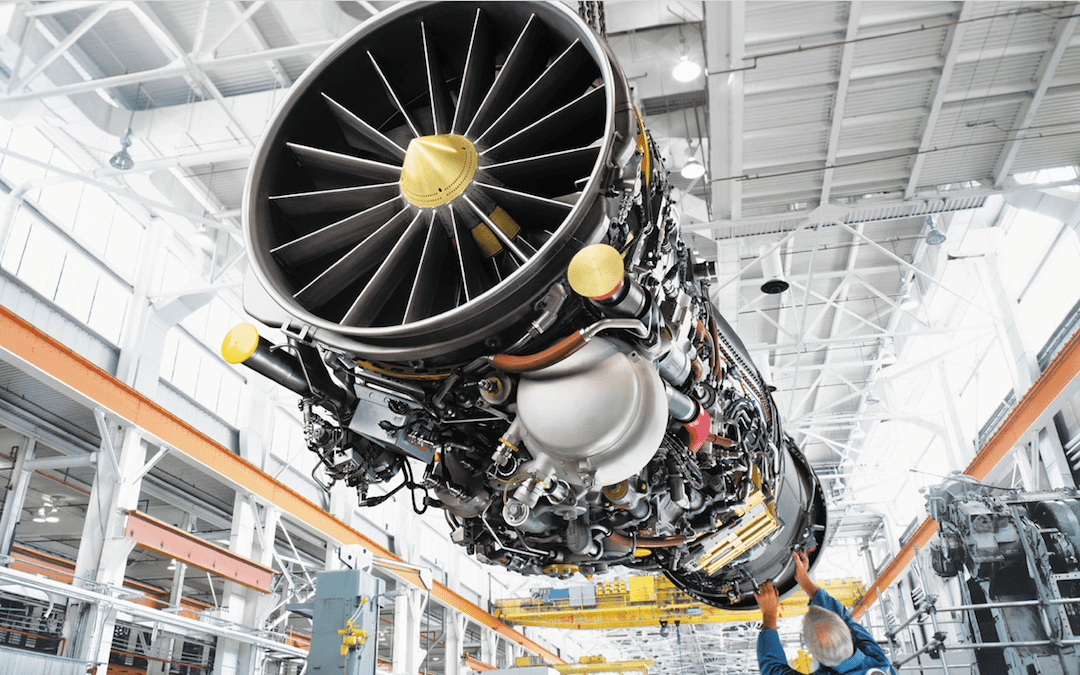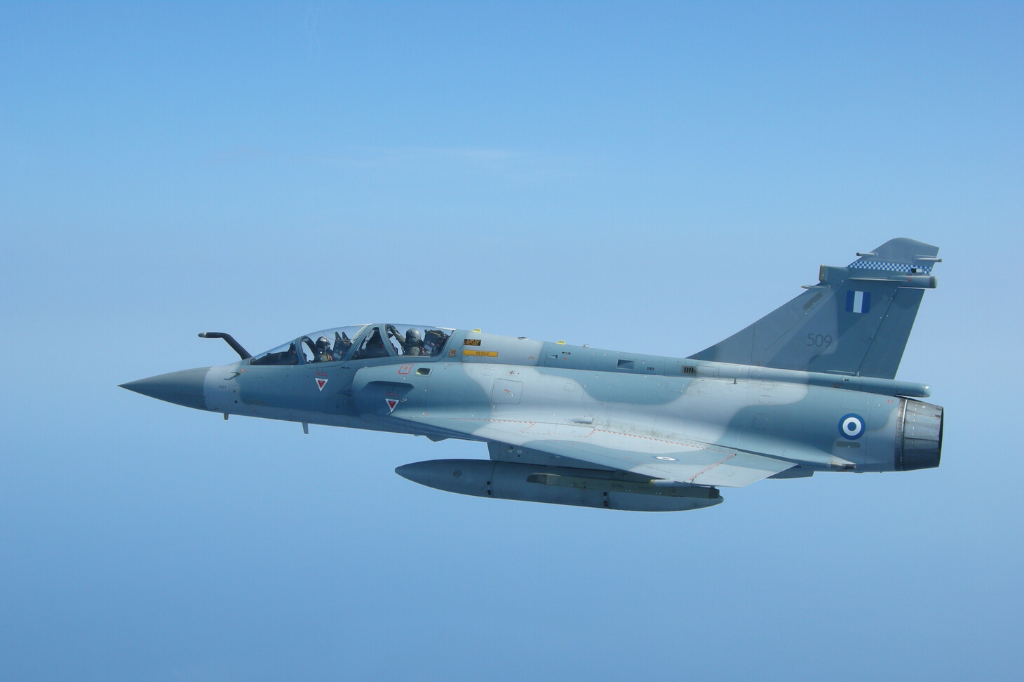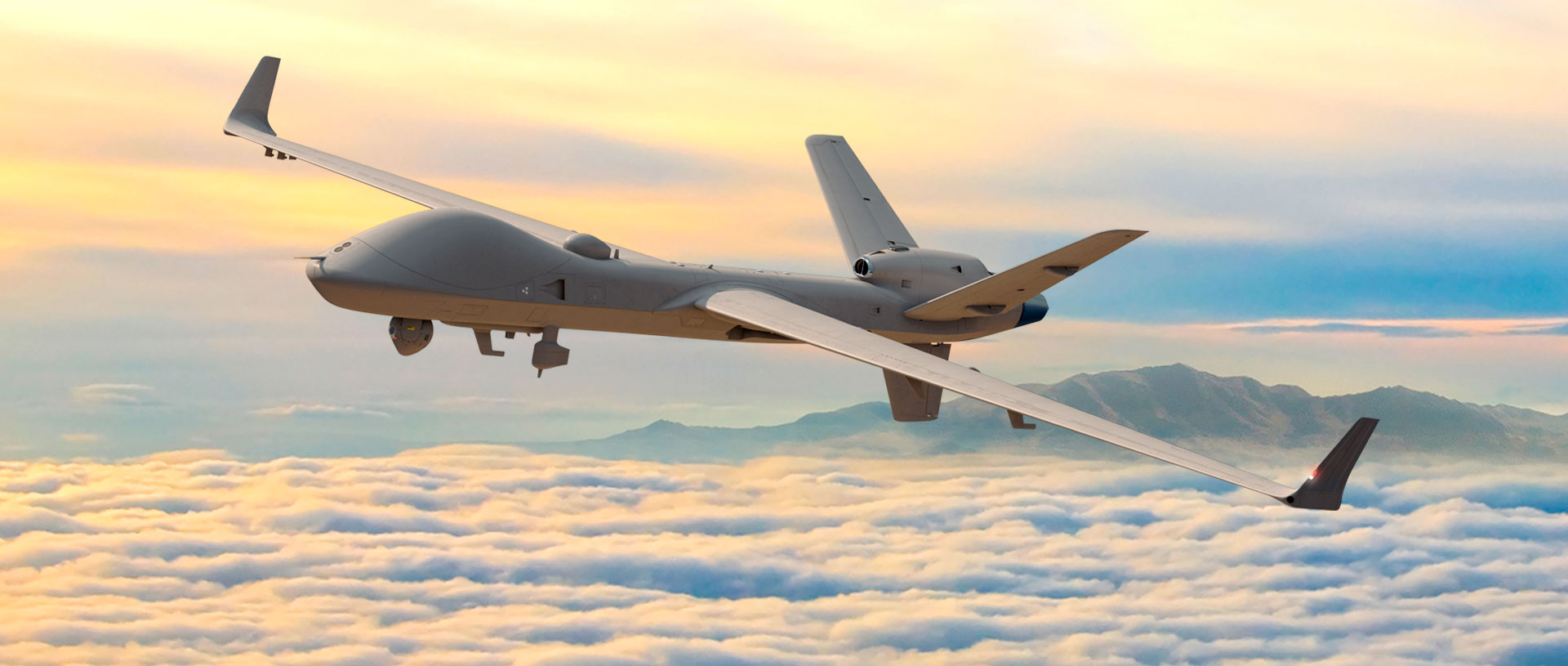SOURCE: AFI


The unveiling of artist impressions and official renderings of Boeing’s F-47, the United States Air Force’s (USAF) sixth-generation fighter jet under the Next Generation Air Dominance (NGAD) program, has ignited a firestorm of discussion among defense enthusiasts and analysts. The graphics, showcased during and after the NGAD announcement, revealed two distinct design variants—one featuring a canard delta configuration and another without—prompting widespread speculation about the aircraft’s final form, its stealth capabilities, and the intent behind these divergent depictions.
The inclusion of canards—small forewings positioned ahead of the main wings—in one rendering has been the focal point of contention. Traditionally, canards enhance maneuverability, offering superior pitch control and agility, as seen in aircraft like the, Rafale, Tejas MkII, Eurofighter Typhoon, Saab Gripen and even on 5th gen jets like J-20. However, their presence on a sixth-generation stealth fighter like the F-47 raises eyebrows, given the conventional wisdom that such protrusions increase radar cross-section (RCS), potentially undermining the low-observable profile critical to modern air combat. Some remained skeptic, with sentiments like “Don’t go believing the initial PR snaps… canards/forewings are bad for stealth for starters,” reflecting a broader concern that these features clash with the F-47’s promised “state-of-the-art stealth technologies.”
Continue readingSOURCE: AFI


In a significant development highlighting growing military cooperation, two delegations from the Armenian Army Spetsnaz recently met with representatives of India’s elite 50th Para Brigade. The meeting, held in India, focused on exploring joint tactics, training programs, and potential collaboration in advanced military operations. This engagement is seen as a step forward in the evolving defense partnership between Armenia and India, two nations increasingly aligned in their strategic interests.
The discussions likely centered on key areas of mutual interest, including personnel training, the integration of cutting-edge technologies—both manned and unmanned—and the exchange of operational expertise. The Armenian Spetsnaz, known for their specialized combat capabilities, and the 50th Para Brigade, a highly regarded airborne and special operations unit within the Indian Army, bring complementary strengths to the table. This synergy could pave the way for enhanced interoperability between the two forces.
Continue readingSOURCE: AFI
)

In a groundbreaking move to bolster India’s defense manufacturing ecosystem, the Uttar Pradesh government is establishing a state-of-the-art military hardware testing facility in Lucknow. This facility, the first of its kind in the state and only the second in the country, is poised to enhance the Uttar Pradesh Defence Industrial Corridor (UPDIC) while reinforcing India’s push toward self-reliance in defense production.
The ambitious project is being developed under the Defence Testing Infrastructure Scheme (DTIS), an initiative launched by the Ministry of Defence (MoD) to promote indigenous defense capabilities. A special purpose vehicle (SPV) named the Advanced Material (Defence) Testing Foundation (AMDTF) will oversee the facility’s development and operations. To ensure the project’s swift progress, the Uttar Pradesh government has approved the allocation of free land, signaling its commitment to making the state a hub for defense innovation.
Continue readingSOURCE: AFI


In a landmark achievement for India’s private defence manufacturing sector, Bengaluru-based SSS Defence has clinched a contract to supply 405 units of its indigenous P-72 Assault Rifles, chambered in 7.62x39mm, to the Uttar Pradesh (UP) Police. Emerging as the lowest bidder (L-1) in a fiercely competitive tender, SSS Defence outshone established players, including the public-sector giant Advanced Weapons and Equipment India Limited (AWEIL), by clearing the technical evaluation phase with its modern, versatile rifle.
The P-72 Assault Rifle, developed by SSS Defence, is part of the company’s innovative P-72 family of rifles, designed to meet the evolving needs of military and law enforcement agencies. Chambered in the widely used 7.62x39mm caliber—the same as the iconic AK-47—the P-72 offers a blend of firepower, reliability, and adaptability. Featuring a short-stroke piston operating system, the rifle ensures smoother operation, reduced recoil, and enhanced durability, making it well-suited for the demanding conditions faced by the UP Police in urban and rural security operations.
Continue readingSOURCE: AFI


The developers of Modern Warships, a popular cross-platform arcade online action game, have announced the imminent arrival of INS Vikrant (IAC-I), an aircraft carrier currently in service with the Indian Navy. This exciting addition, brought to life by Artstorm FZE, Cube Software, and Gaijin Entertainment, promises to inject fresh tactical depth into the game’s dynamic naval battles. Known for its realistic portrayal of modern warships, jets, and drones, Modern Warships continues to expand its roster with this indigenous Indian marvel, blending real-world design with arcade-style action.
INS Vikrant, India’s first domestically built aircraft carrier, commissioned in September 2022, is a symbol of national pride and engineering prowess. In Modern Warships, it joins a lineup of global naval titans, offering players a chance to command a vessel that mirrors its real-world counterpart’s versatility and power. The gameplay mechanics for Vikrant align with the standard tactics of aircraft carriers in the game: deploying its air wing for reconnaissance, air strikes, and enemy suppression. With a capacity to carry up to 36 aircraft—including MiG-29K fighters, Kamov-31 helicopters, and MH-60R multi-role helicopters—Vikrant’s aviation capabilities make it a formidable force for dominating the skies and striking distant targets.
Continue readingSOURCE: RAUNAK KUNDE / NEWS BEAT / IDRW.ORG


Hindustan Aeronautics Limited (HAL) has taken a significant step in the development of its Hindustan Lead-in Fighter Trainer (HLFT-42) by issuing a Request for Information (RFI) for a jet engine to power this ambitious supersonic trainer aircraft. Released on March 17, 2025, the RFI outlines stringent performance criteria, calling for an engine with a maximum thrust of 95-100 kN (kilonewtons) and a total technical life of 6,000 hours. This move signals HAL’s intent to equip the HLFT-42 with a powerplant capable of meeting the rigorous demands of modern pilot training while potentially laying the groundwork for India’s broader aerospace ambitions.
According to details emerging from industry sources , the RFI specifies an engine with a maximum thrust of 95-100 kilonewtons (kN) and a total technical life of 6,000 hours. maximum Mach Number at1.8 and will be able to operate at Up to 18 km (60,000 feet).
Continue readingSOURCE: RAUNAK KUNDE / NEWS BEAT / IDRW.ORG


The long-standing uncertainty surrounding the engine supply for India’s Light Combat Aircraft (LCA) Tejas Mk1A has finally been resolved, bringing relief to the Indian Air Force (IAF) and Hindustan Aeronautics Limited (HAL). According to aerospace journalist Anantha Krishnan M, the GE F404 engines, critical to powering the new Mk1A variant—affectionately dubbed “LCA Alpha”—are on their way to India.
This development, detailed in a report by Tarmak Media House (TMH) on March 21, 2025, puts an end to months of speculation, debate, and concern over the “missing power plant” that had threatened to derail the ambitious indigenous fighter program.
Continue readingSOURCE: RAUNAK KUNDE / NEWS BEAT / IDRW.ORG


India’s Defence Research and Development Organisation (DRDO) has confirmed that its 25-ton Zorawar Light Tank, currently undergoing developmental trials under Project Zorawar, is designed with scalability in mind, paving the way for a potential 32-ton variant if the Indian Army seeks greater firepower and upgrades in the light tank category. This flexibility underscores DRDO’s forward-thinking approach, ensuring the platform can adapt to evolving operational needs while maintaining its core design integrity.
The Zorawar, developed in collaboration with Larsen & Toubro (L&T), was unveiled in July 2024 as a 25-ton light tank tailored for high-altitude warfare, particularly along India’s northern borders in Ladakh and Sikkim. Optimized for agility and air-transportability, it currently features a 105mm turret from Belgium’s John Cockerill and a Cummins engine delivering a power-to-weight ratio exceeding 35 hp/tonne.
Continue readingSOURCE: AFI


The prospect of Ukraine bolstering its air force with additional Mirage 2000-5 fighter jets remains a topic of active discussion, with French President Emmanuel Macron indicating that these aircraft could be supplied by third countries currently operating them.
This statement comes as France has already pledged a limited number of Mirage 2000-5Fs to Ukraine, signaling a willingness to support Kyiv’s aerial defense capabilities. However, no other nation has publicly committed to transferring their Mirage 2000-5s, leaving the possibility of further deliveries uncertain.
Continue readingSOURCE: AFI


In an unexpected development, the Indian Army has decided to upgrade the engines of its T-90 tank fleet to a new 1350 horsepower (HP) variant, a move that has caught many observers off guard. This decision, confirmed in a recent Standing Committee report and bolstered by the Defence Acquisition Council’s (DAC) approval of eight capital acquisition proposals worth over Rs 54,000 crore on March 20, 2025, signals a significant enhancement in the operational capabilities of one of India’s mainstay battle tanks. However, the specifics of this upgrade—particularly the supplier and the engine’s origins—remain shrouded in ambiguity, sparking curiosity and speculation.
The T-90, a third-generation Russian main battle tank, forms the backbone of the Indian Army’s armored corps, with over 1,100 units in service, primarily the T-90S “Bhishma” variant. The Bhishma, tailored for Indian requirements, is currently powered by the V-92S2 diesel engine, delivering 1,000 HP. This engine, while reliable, has been seen as underpowered for the tank’s 48-tonne combat weight, particularly in the high-altitude regions of Ladakh and along the Line of Actual Control (LAC) with China, where agility and power-to-weight ratio are critical.
Continue readingSOURCE: AFI


The Indian Air Force (IAF) is set to enhance the survivability of its frontline airbases by procuring aircraft decoys modeled after its Rafale, Su-30 MKI, and Tejas fighters. These decoys, designed to mimic the visual and radar signatures of the real aircraft, will be deployed at forward runways to deceive enemy forces during a surprise attack, providing a critical layer of passive defense against aerial and missile strikes. The initiative reflects the IAF’s growing emphasis on safeguarding its assets amid rising regional tensions and the evolving threat of precision-guided munitions.
The plan, currently in the preliminary stages, aims to protect key bases along India’s northern and western borders, where aircraft like the Rafale, Su-30 MKI, and Tejas are stationed to counter potential aggression from China and Pakistan. By deploying realistic decoys, the IAF seeks to confuse enemy reconnaissance and targeting systems, drawing fire away from operational aircraft and infrastructure.
Continue readingSOURCE: AFI


Indian Railways is actively pursuing the establishment of small modular nuclear reactors (SMRs) to power its vast network, aiming to achieve its ambitious goal of net-zero emissions by 2030. In a significant move towards sustainable energy, the railway giant is currently engaged in negotiations with the Department of Atomic Energy (DAE) and the Ministry of Power to explore the feasibility of deploying these clean energy sources.
The primary objective is to meet the burgeoning 10 GW traction power requirement projected by 2030. By leveraging nuclear energy, Indian Railways seeks to significantly reduce its reliance on fossil fuels, thereby mitigating its environmental impact. This initiative aligns with India’s broader commitment to combating climate change and transitioning to a cleaner energy mix.
Continue readingSOURCE: IDRW.ORG


Hindustan Aeronautics Limited’s (HAL) Nashik Division, fondly dubbed the MiG Complex, is emerging as a linchpin in India’s indigenous fighter aircraft program, with three to four Light Combat Aircraft (LCA) Mk1A airframes—known as “Alphas”—currently in various stages of assembly. Leveraging over six decades of experience in producing and maintaining MiG variants and Su-30 MKI fighters, the division’s workforce is demonstrating remarkable skill and efficiency.
“The speed at which the first aircraft is coming out is a testament to their expertise,” an official told Tarmak Media House (TMH) in a statement reported on March 21, 2025, highlighting Nashik’s pivotal role in delivering the LCA Mk1A to the Indian Air Force (IAF).
Continue readingSOURCE: IDRW.ORG


In a groundbreaking revelation, Vivek Lall, Chief Executive of General Atomics Global Corporation, has disclosed that 21 of the 31 MQ-9B Predator drones ordered by India will be assembled within the country. This announcement, made in an exclusive interview with BharatShakti Editor-in-Chief Nitin A. Gokhale, marks a pivotal moment for India’s defense manufacturing ecosystem, reinforcing its push toward self-reliance under the “Make in India” initiative. The $3.5 billion tri-service deal, signed with the United States under the Foreign Military Sales (FMS) program, underscores a deepening India-U.S. defense partnership and promises to elevate India’s surveillance and combat capabilities.
The MQ-9B drones, comprising 15 SeaGuardian variants for the Indian Navy and eight SkyGuardian variants each for the Indian Army and Air Force, are among the world’s most advanced unmanned aerial vehicles (UAVs). With a delivery timeline spanning three years, General Atomics plans to supply 10 drones in flyaway condition—ready for immediate deployment—while the remaining 21 will be assembled in India. “The deadline for delivery is three years, but it’s a government-to-government agreement on when the delivery will happen. All 31 will come in, out of which 10 will go in flyaway condition now, and the remaining 21 will be assembled in India,” Lall stated, highlighting the structured rollout of this ambitious project.
Continue readingSOURCE: AFI


In a significant boost to India’s indigenous defense manufacturing and military modernization efforts, the Standing Committee on Defence has confirmed the procurement of 156 Light Combat Helicopters (LCH) Prachand for the financial year 2025-26. The announcement, detailed in a report tabled in Parliament, underscores the government’s commitment to equipping the armed forces with advanced, homegrown platforms. Alongside this, plans are also underway to procure Light Utility Helicopters (LUH) during the same period, further strengthening the rotary-wing capabilities of the Indian Army and Air Force.
The decision to procure 156 units, slated for FY 2025-26 (April 2025 to March 2026), follows years of development and testing, during which the Prachand proved its mettle in extreme conditions, including deployments in Ladakh during the 2020 border standoff with China. The Standing Committee’s report highlights the helicopter’s strategic importance, noting its role in enhancing the Indian Army and Air Force’s ability to conduct rapid, precise strikes in contested environments.
Continue reading